- Occasionally I rerun a favorite older post because many current blog followers have never seen it. This one was published on January 30, 2013. I’ve rewritten some of the text and edited the formatting.
More than half of all bird species (5000+) are classified in order Passeriformes and referred to as passerines. Passerines, sometimes known as perching birds or less accurately as songbirds, have four toes – three of them directed forward and one toe directed back. This arrangement allows for stable perching on structures such as small branches, herbaceous stems and wires because the hind toe is opposable to the others (much like our thumbs are opposable to our fingers) which allows “grasping”.
Interestingly, the tendon/bone anatomy of passerines and some other birds causes automatic closing of the foot (grasping) when the leg bends – such as when it lands on a typical perch. This arrangement also allows them to sleep on a perch without falling off and is responsible for the talon locking mechanism of raptors.
- This information has practical application for me because of my track record of rescuing raptors in distress. It hasn’t happened yet but if I ever get “footed” by a raptor during the rescue process I know to follow the advice of blog follower and wildlife rehabber Mikal Deese: : “Remember that talon locking mechanism. Take a breath, stay calm, and straighten the (bird’s) leg before you try to peel the toes off of you one by one.”
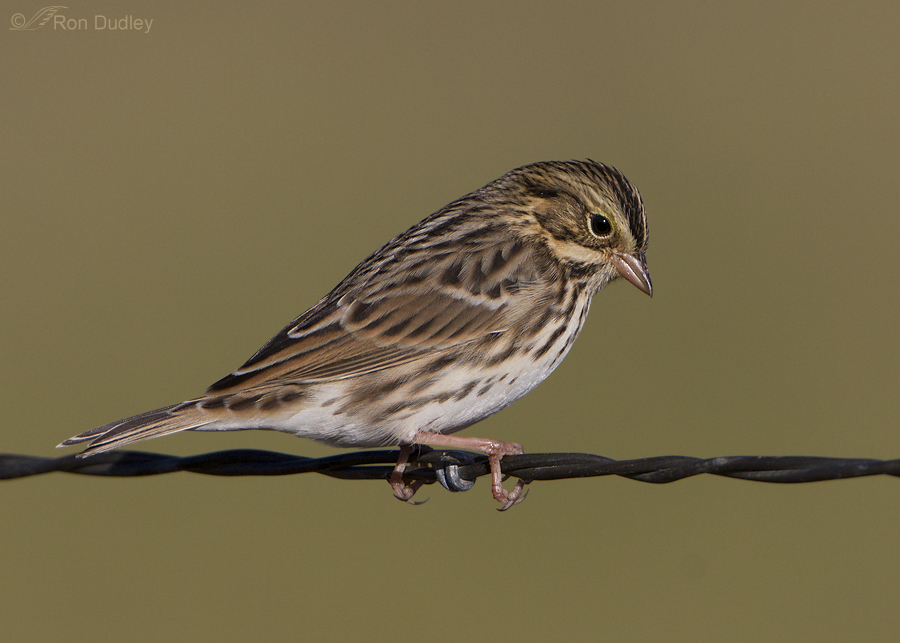
Here we see the typical “three toes forward, one toe back” arrangement on this Savannah Sparrow that allows passerines to grasp narrow perches like small branches or wires and remain stable on them. Animals without something like this toe arrangement would be “walking a tightrope” but these birds have no problem with it.
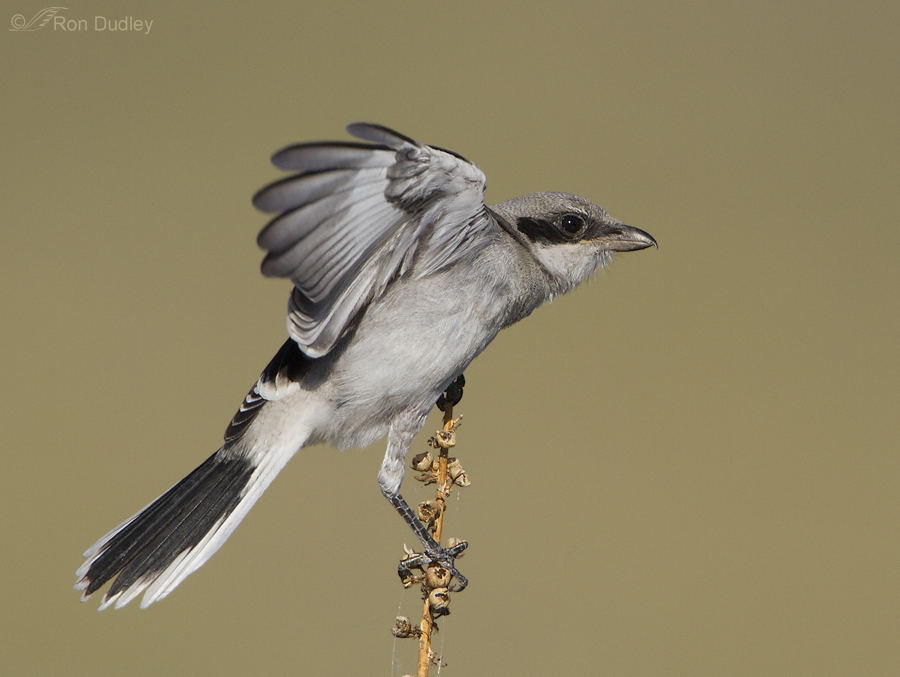 Maintaining stability on a perch such as this would be virtually impossible without the ability to grasp, particularly in a breeze. Even with the ability to grasp this Loggerhead Shrike had some difficulty establishing and maintaining stability on the dried stem.
Maintaining stability on a perch such as this would be virtually impossible without the ability to grasp, particularly in a breeze. Even with the ability to grasp this Loggerhead Shrike had some difficulty establishing and maintaining stability on the dried stem.
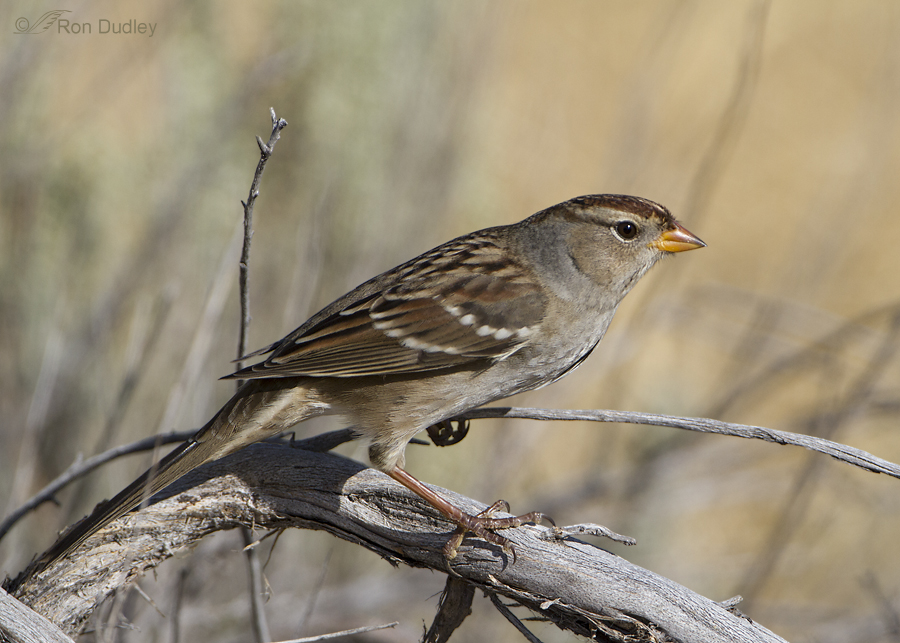
This shot of a juvenile White-crowned Sparrow gives us a better look at all four toes including the opposable rear toe.
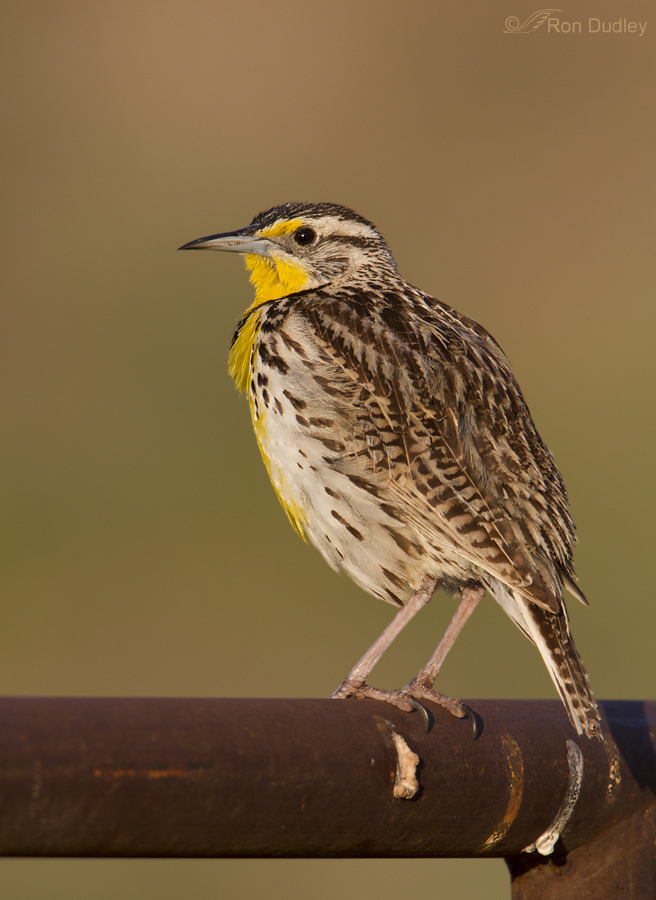
Here’s a rear view of the opposable hind toes, this time on a Western Meadowlark.
Ok, now to my point. Many birds that do not typically “perch” (with exceptions) are waterfowl and shorebirds. The Killdeer is a plover but because of the habitats it prefers it’s often found with passerines and many of us associate them with the perching birds. But think about it, have you ever seen a Killdeer perched in a tree, on a branch, narrow stem or wire? I don’t think I have and I’ve spent a lot of time with them over the years.
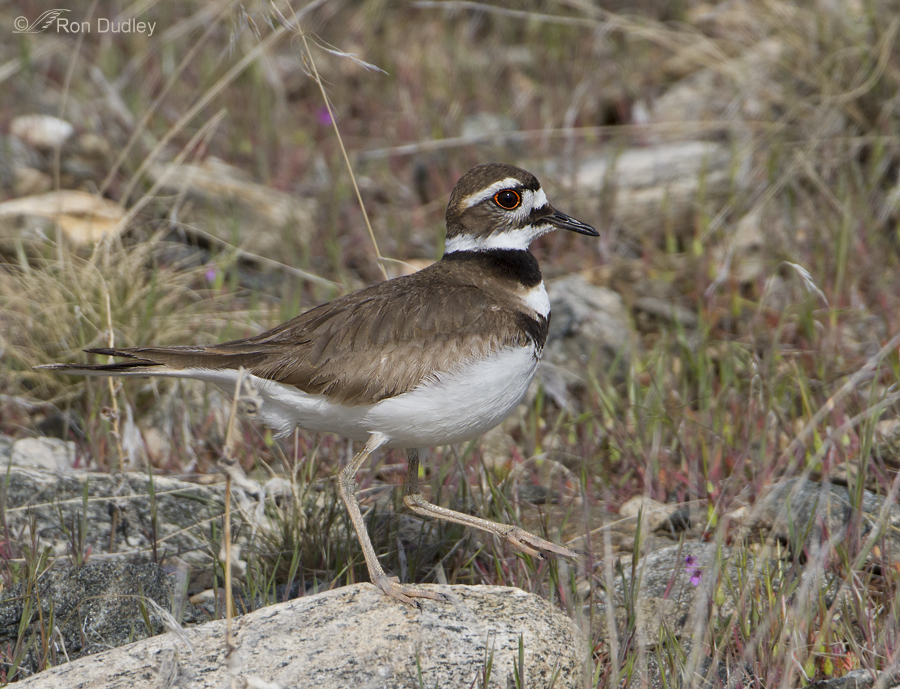
And here’s why. Like most plovers, Killdeer lack the hind toe so they rarely perch, except on something like a relatively flat rock where grasping isn’t required. Because of their toe arrangement they simply do not have the ability to grasp a narrow perch for stability.
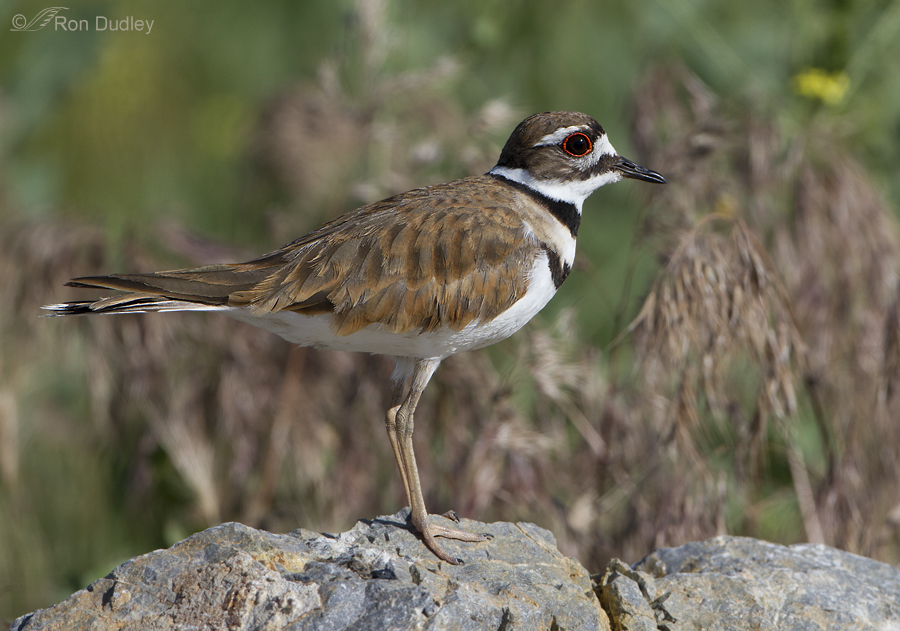
Another view of “the toe that isn’t there”.
This may be elementary information for most folks who are well-schooled in birds but I remember when I finally realized that I’d never seen a Killdeer perched and eventually figured out why.
Perhaps there are others in the same boat as I was…
Ron


fascinating info and pictures! Thanks. As for the raptors I hope I don’t need all that information!
fantastic post! I did not know this about passeriforms! how neat!
Thanks, Nicole.
I’m in the same boat with you. This post got me to thinking about Roadrunners with their 2 toes forward and 2 toes back, and for the second time today I saw one land in a tree. So apparently they have prehensile capabilities. I have been fascinated by Killdeer ever since I saw my first one.
So have I, Susan. As I said in a recent post Killdeer were one of the first birds I paid attention to as a little kid.
I did know that – but it had escaped and become lost in the porridge in my head. Megathanks.
And a thank you to Laura. Bleeding is bad is a problem I have in my daily encounters with the cat. I have got past the shrieking stage but am still struggling not to bleed. And failing.
EC, I know what you mean. That bit of information was way back in the back of my belfry–with the bats. Retrieval is a challenge in that situation…LOL!
It’s pretty hard to will ourselves not to bleed, EC!
Thanks for the bird anatomy lesson! As a birding newbie I appreciate learning these things and love the great photo illustrations to go with!
Thank you, Joanne.
Interesting! I actually KNEW that, but evidently, I’ve slept (oftentimes soundly) since then. Stuff falls out 😉
As for the footing, continue to avoid that, but if it happens, do NOT try to pull back and don’t panic. The raptor will simply grasp harder because its prey is trying to escape. In short, don’t act like prey. Yes, it hurts, but with a redtail, not as much as you anticipate. Avoid letting them grab both hands. That’s bad. Avoid the talons of GHOs at all costs. They don’t like to let go and their grip strength is impressive. They hurt a LOT! Kestrels will sink their talons into the painful little places like between your joints. They’ll also bite, often taking a good-sized chunk out of you. Remember, humans are edible. Just sayin’. Most folks don’t realize that and think we’re impervious to that. We’re not. Also, it’s bad to scream in pain. They LIKE that. Bleeding is bad, too. Try to avoid that because that’s another good thing from their perspective.
Just sharing some of my experiences in rehab and falconry. 🙂
Very good advice, Laura. Thank you.
In other words “try” to over ride every instinct in your body! Yikes!
That’s exactly it Judy. You can scream on the inside, but NOT on the outside! They like that 🙂
Interesting information…never thought of that but makes sense…of course they couldn’t grasp! ….pretty bird, nice, sharp image…
Thanks very much, Patty.
Thanks again Ron for the lesson on birds who perch & don’t perch and also the info on Raptors which include my favourite, the beloved Osprey. I love that you re-run this info since I am a fairly recent viewer.
Thank you, Shirley.
That last shot is so terrific, Ron! Gorgeous.
Thanks, Arwen.
Very interesting post with beautiful photos. May you never have to rachet raptor toes off any part of your body! Been there done that!
I’ll bet you have, April. Doesn’t sound like any fun.
Excellent post Ron, very informative and great images! Thanks for sharing.
Thank you, Dick.
Thank you Ron for the very interesting and informative post. I’ve never thought about this topic and glad that you made me aware of it. When you give us this type of post, I always feel more educated about the birds around me.
It’s something that many of us haven’t thought about, Alice. I didn’t for a very long time.
Huh! 🙂 When you mentioned it I’ve never seen them perched either but didn’t think about it! 🙂 Good advice on a raptor getting hold of you tho I suspect the “taking a deep breath” part might be a challenge! Thx for reposting this.
I suspect it would too, Judy. Thanks.
Great educational post Ron. I did not know this and it was fun to not only learn about killdeer, but also on the rear toe and how important it is. From an evolutionary perspective I wonder if the lack of one toe back for shorebirds has something to do with better float in mud or wet sand. Did the passerines evolve to grasp branches or did the shorebirds evolve away from a rear toe for some reason(s) related to their shoreline habitat?
I’ve wondered about the same evolutionary question you ask, Ed. I still don’t know the answer…
That was really interesting Ron! Thank you!
Good!
Wonderful series and interesting information. The old adage learn one new thing a day, I guess I can go back to bed now.
Charlotte ?😀
That made me smile, Charlotte. Thanks for that!
That was fascinating information……..that difference would never have occurred to me…….hope I never have to straighten anybody’s leg out, but now I’ll at least know what to do !
I hope the same thing, Kris – but I’m happy to know that info if I ever need it.
Fascinating! I love it when I come here and have the privilege of being your student. Plus, we have birdpourri. You’ve combined my two favorite types of posts. 🙂
I’m also drawn to the variations in the birds’ beaks and feather patterns. I love being reminded of the beauty in the LBJs.
“Birdpourri” – I’ll have to remember that one, Marty. Work it into a post title somehow…
🙂
Therapods that they are. (Mostly.)
Good point, George.
Nothing could be better than appreciating works of art while learning about nature. Thank you for today’s (and all other) lessons!
I like that combination too, Elmer. Thanks.
Thank you for such clear photo examples & narratives of the toes.
Thank you, LS.
Yes, thank you, my words exactly!
🙂